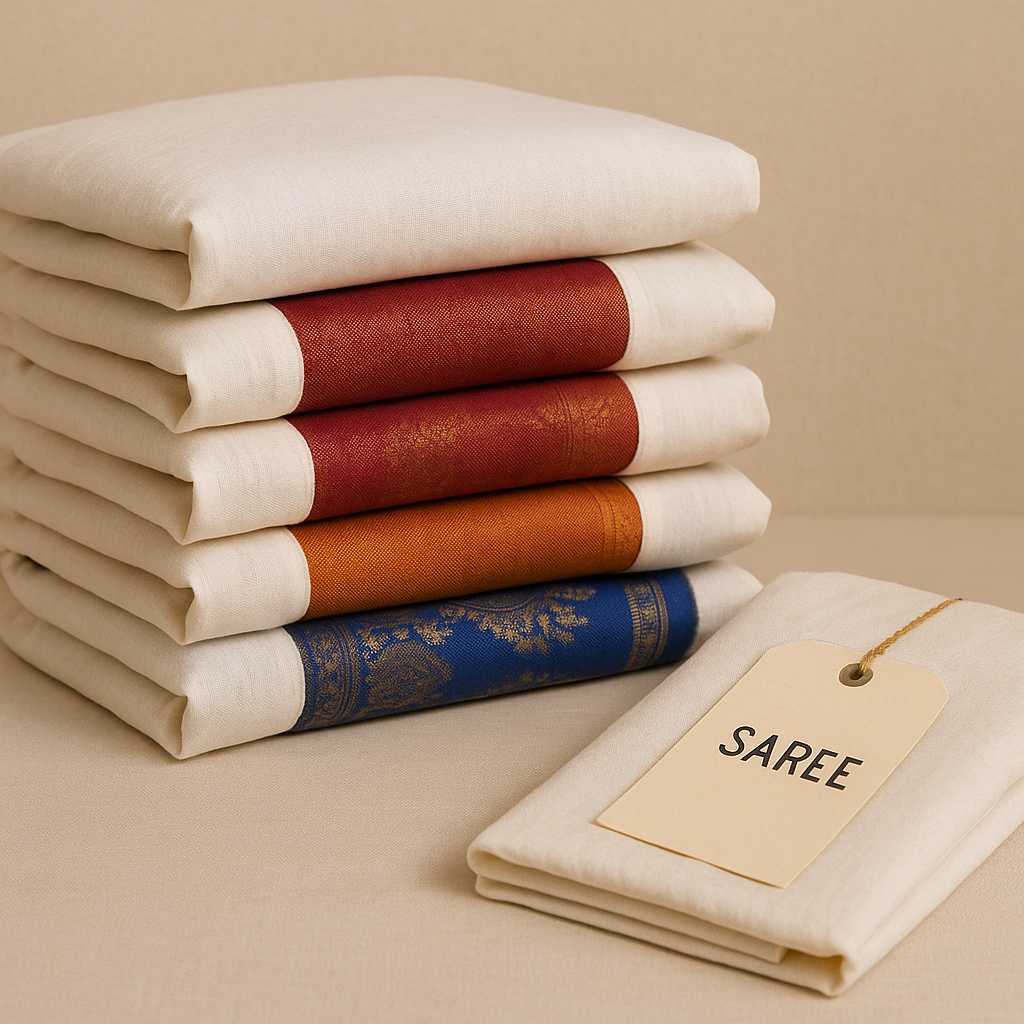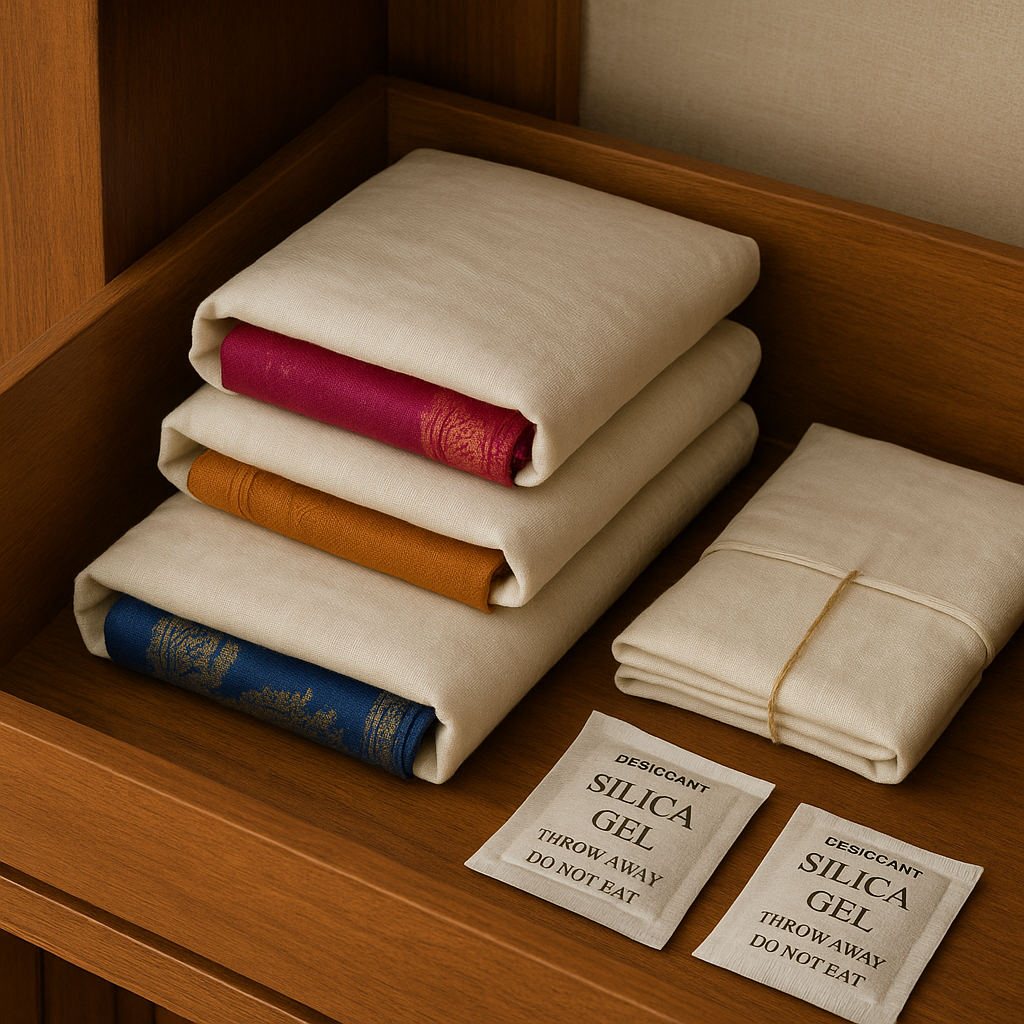Silk sarees are the most cherished expressions of tradition. Whether it’s a rich Kanjivaram from your wedding or a pastel Banarasi from Kalamandir, knowing how to store silk sarees properly is the secret to preserving their charm for generations.
In this guide, you’ll learn simple, expert-backed saree storage tips to prevent fading, creasing, or fabric damage.
The Golden Rule: Always store your silk sarees clean, wrapped in a breathable fabric such as muslin or cotton, and placed in a cool, dry environment away from sunlight and moisture.
Let’s explore this step by step.
- Ensure Cleanliness Before Storage

Before folding and storing your saree, ensure that it is clean—especially if it has already been worn.
Dry cleaning is preferable to home washing, as silk is delicate and can be damaged by water. Washing at home may cause color bleeding or weaken the fabric. Dry cleaning is especially recommended for sarees with zari or intricate embroidery.
Even if the saree appears clean, it may contain body oils, perfume, or perspiration residues that can attract insects or cause discoloration. According to the Silk Mark Organisation of India, silk should ideally be dry cleaned after every 1–2 wears to maintain its texture and color.
- Use Breathable Wrapping Materials

Avoid plastic covers. These can trap moisture and encourage the growth of mold or mildew, causing long-term damage to the fabric.
Instead, use muslin or pure cotton cloths to wrap your sarees. These materials allow air circulation, helping to prevent yellowing and musty odors.
For added organization, consider using stitched muslin pouches with labels for easy identification.
- Choose an Appropriate Storage Location

Avoid storing your silk saree in humid places like bathrooms or in direct sunlight. Research published in the Indian Journal of Textile Research indicates that silk fibers can lose up to 20% of their tensile strength when exposed to direct sunlight over time.
Store your sarees in a cool, dry cabinet or drawer, away from heaters and windows.
To help manage humidity, place silica gel packets nearby. Alternatively, natural insect repellents like neem leaves or cloves, wrapped in cloth, can also be used.
- Folding vs. Hanging

Folding is generally preferable for silk sarees, especially those with heavy zari work, as hanging them can lead to stretching and fabric damage.
Fold your sarees neatly and change the fold lines every 3 to 6 months to prevent permanent creasing.
If hanging is necessary, use soft padded hangers and wrap the saree in muslin to avoid direct contact with the hanger. Metal hangers should never touch the silk directly.
For zari sarees, fold them with the zari side facing inward to protect the metallic threads from tarnishing or dullness.
- Regular Maintenance Is Essential

To maintain the quality of your sarees, air them out every 2–3 months in indirect sunlight for 30 to 60 minutes. This helps eliminate moisture and refresh the fabric. During this process, also change the folds to prevent fabric stress.
Address minor issues such as loose threads or stains immediately to prevent them from developing into permanent damage.
In Summary:
- Clean before storing
- Wrap in breathable fabric
- Store in a cool, dry place
- Fold rather than hang, and rotate folds regularly
- Maintain through periodic airing and prompt repairs
- Proper care ensures that your silk sarees remain timeless and beautiful for generations to come.
Looking to add another heirloom to your collection?
Explore Kalamandir’s curated range of handwoven silk sarees—designed to last, made to be loved.

